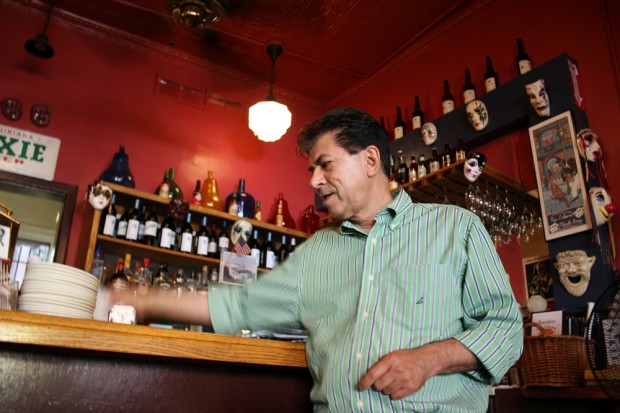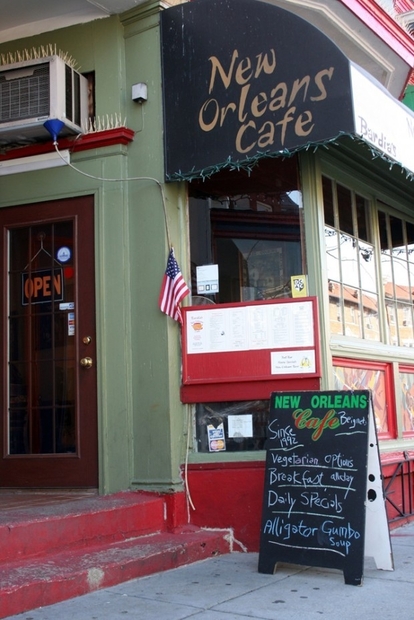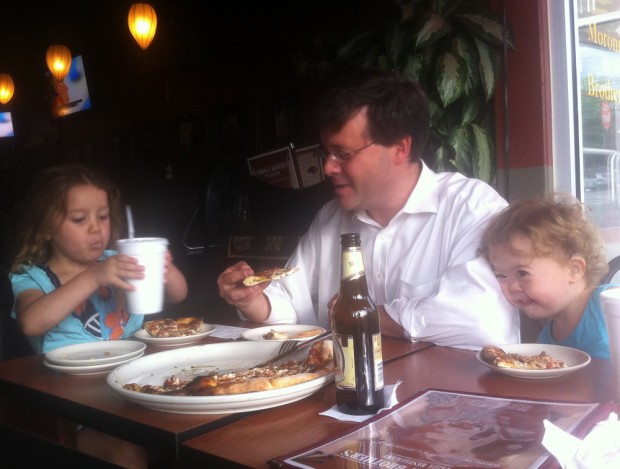July 22, 2011 | 9:00 AM | By Elahe Izadi
What Makes a Restaurant Authentic?
FILED UNDER: Around the City, Culture, Restaurants, Food, Fusion food
Hungarians preparing Japanese dishes; Koreans serving Eastern European fare; Salvadorans making kabobs –a number of D.C. chefs and restaurant owners serve cuisine from countries far from their motherlands. Some to great acclaim.
But is the food authentic? Does it even matter?
“Is it desirable [for food] to be authentic? It depends on who you ask,” Kliman says. “Some people say ‘Yes.’ Others say, ‘It doesn’t matter as long as the food is delicious.’”
Bardia Ferdowski opened Bardia’s New Orleans Cafe in Adams Morgan 19 years ago. The Iranian immigrant spent more than a decade working in Louisiana restaurants while attending college.
“We love the food,” diner Don Wilson says on a recent afternoon. “Bardia spent so much time in Louisiana… and he brought it all up here for us.” Wilson mentions photographs hanging in the restaurant of Louisiana Senator Mary Landrieu, a frequent patron. “That tells you a lot.”
“The cross-pollination almost makes it better,” adds Martina Vandenberg, another customer.
Some find the mix appealing, but the appearance of inauthenticity can hurt a business. Some diners post Yelp reviews with warnings such as, “This is not authentic Creole cuisine.” Other Louisiana natives love it.
Take D.C.’s Ethiopian restaurant scene, which has grown over the past decade, resulting in mostly non-Ethiopian customers. “When it becomes a crossover hit, and becomes really popular with non-Ethiopians, it begins to look like an ‘inauthentic’ place” to some people, Kliman says.
Where’s the chef from?

Elahe Izadi / DCentric permalink
Bardia Ferdowski came to Louisiana from Iran to attend college. He worked at Cajun restaurants for a decade before opening up his own in D.C.

Elahe Izadi / DCentric permalink
Bardia's New Orleans Cafe has been open in Adams Morgan for 19 years.
Elahe Izadi / DCentric permalink
Beignets are a popular dessert item at Bardia's New Orleans Cafe. Owner/chef Bardia Ferdowski says he creates them using his own recipe.
Elahe Izadi / DCentric permalink
Bardia Ferdowski takes empty plates from a couple dining in his Cajun restaurant. Ferdowski is an Iranian immigrant.
Elahe Izadi / DCentric permalink
Jose De Velasquez prepares a pizza at Moroni & Brothers. The Salvadoran immigrant spent years working at Pizzeria Paradiso before opening his own restaurant.
Elahe Izadi / DCentric permalink
Moroni & Brothers in Petworth has a menu that's half pizza, half Central American fare.







